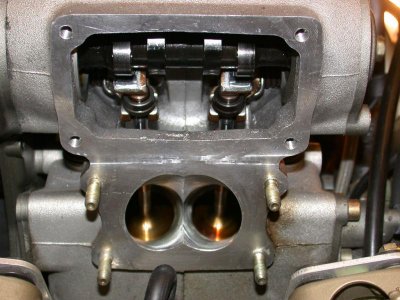4eyedblonde
Well-Known Member
This kinda relates to my last post regading dist clearance on Edelbrock heads. I have to replace the heads as one is cracked and cannot be repaired. The machine shop has a set of 906 heads. Mine had the casting # 216. I was told these are open chamber heads with 2.1 valves etc. Well ported but not matched to the Performer intake. It's '69, 440.
Question; what are 906 heads in comparison to the 216's I took off? I have the option to go aluminum, or with the cast iron units that are prepped already (ported etc). I have full crane adjustable valve train that is still good to re use on either head.
Is aluminum Edelbrock performer heads the way to go or even the Victors? Or for street use stick with the cast iron?
Cam is the 509 purple stick, flat top pistons..basically a well built bottom end on this 440. This is gonna cost me a **** load so I want to do this right once and I don't have the knowledge for this kind of decision, so please help..anyone
Question; what are 906 heads in comparison to the 216's I took off? I have the option to go aluminum, or with the cast iron units that are prepped already (ported etc). I have full crane adjustable valve train that is still good to re use on either head.
Is aluminum Edelbrock performer heads the way to go or even the Victors? Or for street use stick with the cast iron?
Cam is the 509 purple stick, flat top pistons..basically a well built bottom end on this 440. This is gonna cost me a **** load so I want to do this right once and I don't have the knowledge for this kind of decision, so please help..anyone

















